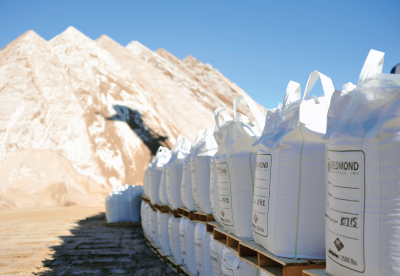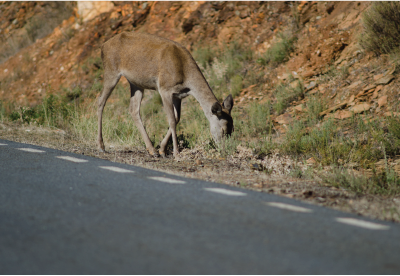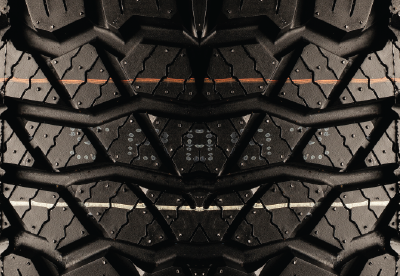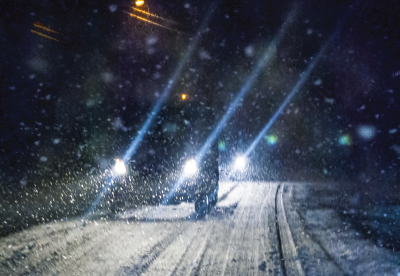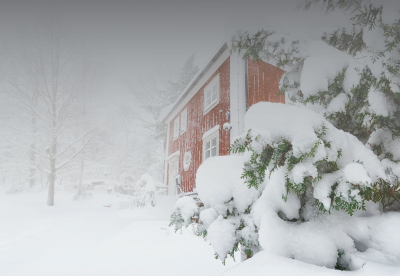Date October 15, 2020 | Brooke Loeffler
Winter Vehicle Safety Kit: Top 14 Must Have Items
What Should I Pack?
Even minor car trouble on a wintry roadside can be greatly taxing on you and your car. You can either create a custom kit for your vehicle, or purchase ready made kits from trusted sources like the American Red Cross. Here are some examples of items you should include:

Non-perishable food and water
Any physical activity during cold temperatures is much more demanding on your body than you realize. It is important to stay fed and hydrated while on the road during the winter. Choose high calorie, high energy items that are stable at room temperature. Purchase emergency water in freeze resistant pouches so you have access to liquid water. You should only drink or eat snow as a last resort, because it will lower your body’s core temperature. Plus roadside snow is not a clean drinking option!
Extra warm/dry clothing
Winter driving can sometimes include unexpected stops. Whether these stops are for impromptu photo ops, mechanical trouble, or road closures, you will want to have spare warm and dry clothes. To avoid hypothermia and frostbite, be sure to remove wet clothing immediately and replace with dry layers . Your car kit should include a couple extra pairs of dry socks, as your feet will likely be the first thing to get wet.
Air activated hand and foot warmers
Burning through fuel to keep your cab warm is a quick way to find yourself inconveniently running on empty. This is especially true for electric vehicles (EVs) during the winter. EVs cannot draw heat from an internal combustion engine to warm the cab. EV batteries deplete much more quickly during the winter.
Be sure to use your air activated hand warmers first before using fuel to warm your car’s cabin. Only use slow and gradual warming methods. Cold temperatures numb nerve receptors, so quick heating methods can often cause burns and other injuries.
Mylar insulation blankets/ponchos/wraps
Mylar insulation blankets are well adapted to collecting the heat your body naturally generates. They can tear easily, so treat them with care so you can fold, store, and reuse.
Emergency lighting/reflectors
Snowy conditions wash out visual markers that we rely on for safety. If you are ever on the side of the road, you will want to make sure other drivers can see where you are by using your vehicle’s hazard flashers, emergency light sticks, and other reflectors. Consider placing a few of these light sources up high on your vehicle (like your roof) if the snow is especially deep. If your car is disabled or stuck, using bright visual markers will also help those coming to your aid find you easier. You will also want to have a flashlight with extra batteries so you can light your cabin without draining your car’s battery.
First aid kit
Vehicle first aid kits should include: various bandage sizes, antiseptic wipes, triple antibiotic ointment, and any necessary medications that you take on a regular basis.
Portable phone charger and external battery
If you are stopped, charging your phone off your car can drain your battery unnecessarily. Packing an external charger and cord can help you keep your lifeline up and running until you get to your destination.
Road maps
It's time to go analog. In case you lose mobile data connectivity, it is helpful to have hard copies of your route in your vehicle. This is especially important for long distance travels.
Booster cables or trickle charger
Your battery’s capacity is diminished during cold temperatures. Storing a set of booster cables or a trickle charger can not only help you in an emergency, but can enable you to be a Good Samaritan to others in need.
Ice scraper
Including an ice scraper in your winter car kit is a no brainer. Even if you park in a covered location at home, it is helpful to have while out and about. Be sure to choose one with a scraping blade and a brush so you can remove ice and brush away heavy snow deposits.
Vehicle snow shovel
Car sized snow shovels (which can sometimes be found with winter backpacking/camping gear) are extremely useful. Their smaller size and easy disassembly allow you to conveniently stow it under a seat. Snow shovels are perfect for clearing obstructions around your tailpipe and digging out stuck tires.
Sturdy tow rope
Sometimes deep snow deposits on the side of the road can make it difficult to free your vehicle. For those extra tricky spots, having a tow rope around can enable you to give your car (or other stuck travelers) an extra hand.
Granular deicer
Granular deicer is the perfect tool to help you melt ice and snow around your tires and restore traction. Nature’s Blend from Ice Slicer is the ideal choice for your winter vehicle kit. Our naturally high performing ice melt is more powerful, less corrosive to your vehicle, and safer to use than white salt.

Emergency radio
During a roadside emergency it is important to conserve your car’s battery and fuel as much as possible. Using an emergency radio (either battery or hand crank powered) helps you stay up to date on weather and road conditions that will affect your location.
Don’t Forget to Restock
If, on your journey, you used any items from your emergency car kit, replenish the necessary supplies. Focus especially on food, water, medicine, and heating supplies. Some items are reusable; if they were not damaged, and can be repacked as is.
Replace any items that were damaged (such as torn insulation blankets) so you can be fully stocked for future travels. Dry and replace your emergency warm clothing reserves. And, if you used any of your ice melt, make sure to replenish your storage container.
Want more winter car tips? Click here for our handy Winter Driving Guide.
© 2024 Redmond Minerals Inc.

